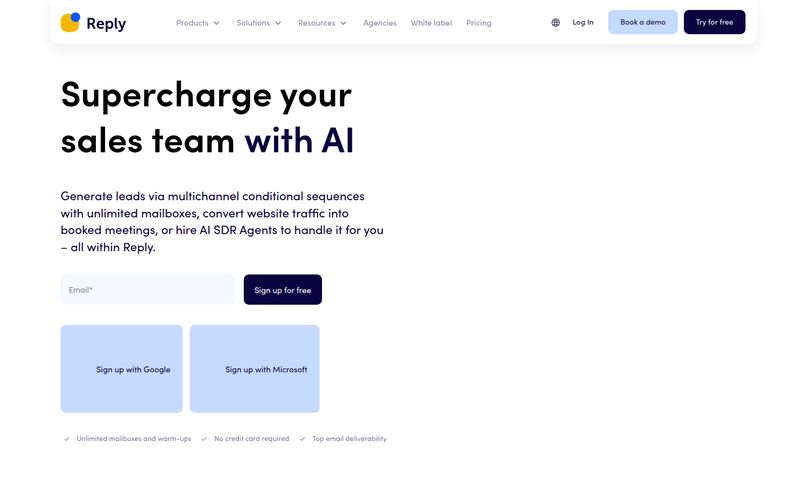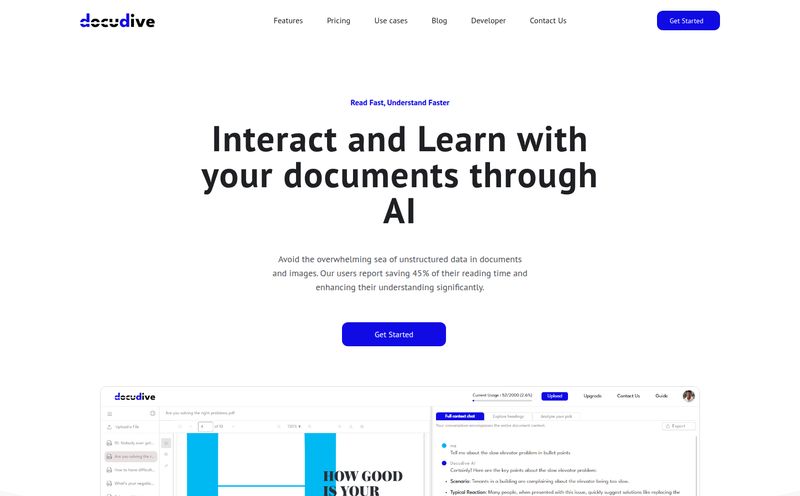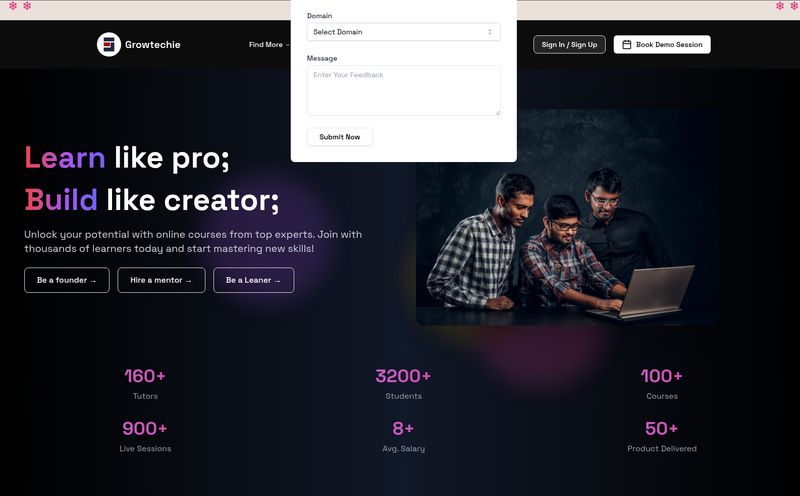We’ve all been there. It’s 2 AM, your eyes feel like sandpaper, and you're staring at a log file that makes less sense than a surrealist painting. Your shiny new AI product, the one that was working perfectly in the staging environment, is now out in the wild… and it's acting weird. It’s giving strange answers, users are getting frustrated, and you have absolutely no idea why.
It’s a nightmare. A complete, unadulterated, pull-your-hair-out nightmare. And it’s a feeling that every single person who has ever shipped an AI product knows intimately. The 'black box' problem isn't just a textbook concept; it's a very real monster that lives in your production environment.
For years, I've seen teams struggle with this. We have amazing tools for monitoring traditional software performance—CPU usage, database queries, you name it. But for AI? It's often been a guessing game. Until now, maybe. I’ve been playing around with a tool that claims to be the antidote to this particular brand of chaos: Raindrop AI.

Visit Raindrop AI
So, What Exactly is Raindrop AI?
Okay, let's cut through the marketing speak. Raindrop AI is an AI monitoring tool. But that's a bit like saying a Ferrari is just a car. It doesn't quite capture the spirit of the thing.
Think of it more like a smoke detector combined with a black box flight recorder for your AI. It’s designed to sit quietly in the background of your AI product, watching. When something goes wrong—or even when something goes unexpectedly right—it sends up a flare. It doesn’t just tell you “Hey, there’s a fire.” It tells you where the fire started, what caused it, and gives you a direct line to the exact moment things went off the rails. No more sifting through thousands of user interactions hoping to find teh one that broke everything.
It’s built for AI engineers who need to quickly pinpoint and fix the weird, unpredictable issues that pop up when real humans start interacting with their models. In my opinion, that's pretty much all of them.
Why Traditional Monitoring Fails for AI Products
Why do we even need a specialized tool for this? I’ve had some old-school ops guys argue that good logging is good logging, full stop. And while they're not entirely wrong, they're missing the point.
Monitoring a traditional app is about watching for predictable failures. Did the database connection drop? Is the server out of memory? These are known quantities. Monitoring an LLM is... different. You're not just watching for errors; you're watching for undesirable behavior. Things like:
- Model Hallucinations: When the AI confidently makes stuff up.
- Bias Creep: When the model starts showing subtle (or not-so-subtle) biases in its responses.
- Toxicity & Safety Fails: When a user finds a way to jailbreak your prompts and get the AI to say things it absolutely shouldn't.
- Just Plain Weirdness: Responses that are technically correct but tonally bizarre or unhelpful.
You can't just slap a `try/catch` block around a hallucination. You need a system that understands context and conversation. And that's the gap Raindrop AI aims to fill.
Peeking Under the Hood of Raindrop AI
So how does it actually do it? I took a look at its core features, and a few things really stood out to me from an SEO and product development perspective.
Issue Detection That Speaks Your Language
This is the part that genuinely impressed me. Instead of writing complex RegEx or convoluted rules, you can tell Raindrop AI what to look for in plain English. You can literally set up an alert that says, "Notify me when the AI apologizes for not having information" or "Track whenever a user expresses frustration." This natural language approach lowers the barrier to entry significantly. You don’t need to be a data scientist to start getting valuable insights out of your user interactions.
Finding the Needle in the Haystack
Getting an alert is one thing. Doing something about it is another. Raindrop links every single alert directly to the event that triggered it. This means you can click a notification in Slack and be taken straight to the full conversation or trace. You see what the user said, how the AI responded, and the context around it. This is a game-changer for root cause analysis. It turns a multi-hour debugging slog into a five-minute investigation. It's less like a cryptic error code and more like a GPS pointing directly to the scene of the accident.
Tuning Into Your User’s Frequency
As someone obsessed with traffic and user engagement, I love this feature. Raindrop AI makes it easy to analyze user feedback signals, like the classic thumbs up/thumbs down. It doesn't just count them; it helps you find patterns. Are users consistently downvoting responses on a specific topic? Are they loving a particular type of interaction? This is gold. It’s quantitative data that tells a qualitative story, helping you refine your prompts, fine-tune your model, and ultimately build a product that people actually want to use.
The All-Important Question: Raindrop AI Pricing
Alright, let's talk turkey. No tool is perfect if you can't afford it. Raindrop AI has a pretty straightforward pricing structure, which I appreciate. No hidden fees or confusing credit systems.
Here’s a quick breakdown as of my writing this:
| Plan | Price | Key Features |
|---|---|---|
| Starter | $65 / month + $0.001 / interaction | Issue Detection, Slack Notifications, Thumbs Up/Down Signals. Comes with a 1-month free trial. |
| Pro | Starting at $350 / month | Everything in Starter, plus Deep Research tools, Topic Clustering, Custom Issues, Tracing, PII Redaction, and Semantic Search. |
My take? The Starter plan is incredibly accessible. For $65 a month and a tiny cost per interaction, a small team or even a solo developer can get serious monitoring capabilities. The free trial is a no-brainer. The Pro plan is clearly aimed at more established AI-first companies that need to do deep dives and manage data at scale. For them, $350 is a drop in the bucket compared to the cost of a damaged reputation or a haemorrhaging user base.
My Honest Take: The Good, The Bad, and The... Necessary
No review is complete without a bit of critique. I've always felt it's important to look at both sides.
On the plus side, the ease of integration and the sheer speed at which you can go from problem to solution is fantastic. The user feedback analysis is more than just a vanity metric; it’s a genuine product development tool. And the fact that it’s trusted by some serious AI-first companies gives it a lot of credibility.
On the other hand, for a team with very specific, complex needs, they might eventually want even more granular control than what the platform offers. And while the Starter plan is great, some might argue that the jump to the Pro plan is a bit steep. There's also a learning curve. It's easy to get started, but to truly master the deep research tools in the Pro plan, you'll need to invest some time. It's not a magic wand, it's a power tool—you still have to know how to use it.
Conclusion: Is Raindrop AI Right for You?
So, what's the verdict? In my experience, building in the AI space without a proper monitoring tool is like trying to navigate a ship in a storm with no compass. You might be fine. Or you might hit an iceberg.
Raindrop AI feels like a very, very good compass. It's not going to steer the ship for you, but it will give you the information you need to avoid disaster and find your way to a better destination. If you're building any kind of AI or LLM-powered product and you're currently flying blind on user interactions and model behavior, you should give it a look. Seriously. The free trial makes it an easy decision.
The age of just shipping an AI and hoping for the best is over. Tools like Raindrop AI are becoming less of a luxury and more of a necessity for anyone who wants to build responsibly and successfully.
Frequently Asked Questions about Raindrop AI
- 1. What kind of AI products can Raindrop AI monitor?
- It's designed for pretty much any AI product that involves user interaction, especially those built on Large Language Models (LLMs). This includes chatbots, AI-powered search, content generation tools, and more.
- 2. How hard is it to set up Raindrop AI?
- Based on their documentation and the general feedback, integration is designed to be straightforward. For most common setups, you should be able to get it running fairly quickly without major code refactoring.
- 3. Can I track custom issues specific to my product?
- Yes, absolutely. The Pro plan specifically includes features for creating custom topics and issues, allowing you to tailor the monitoring to the unique behaviors and KPIs of your application.
- 4. Does Raindrop AI help with data privacy like PII?
- Yes, the Pro plan offers Edge-PII Redaction. This is a critical feature for anyone handling user data, as it helps automatically identify and remove personally identifiable information before it's even processed, helping you stay compliant.
- 5. Is there a free version of Raindrop AI?
- There isn't a permanently free tier, but the Starter plan comes with a one-month free trial, which is more than enough time to integrate it and see if it provides value for your team.
- 6. How does the Slack integration work?
- It sends real-time alerts directly to a Slack channel of your choice. When an issue you're tracking is detected, you get a notification with a direct link to the event in Raindrop AI, so your team can jump on it immediately.



